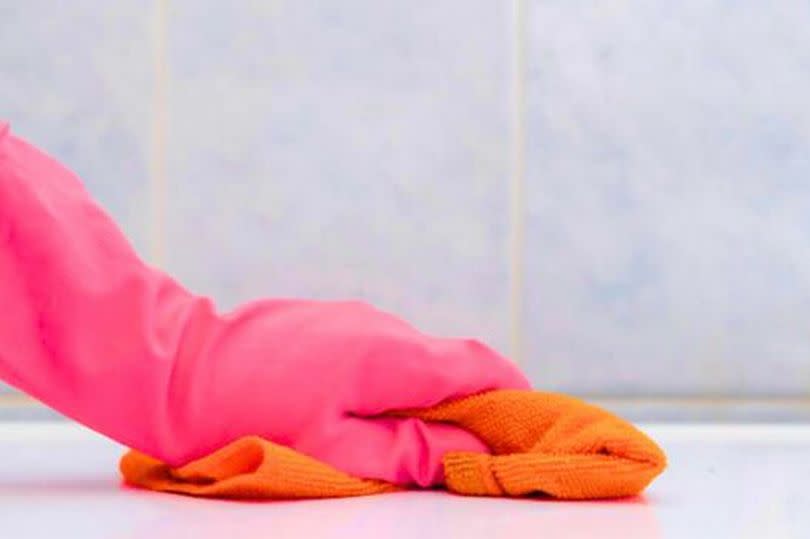How to remove bathroom sealant mould in 15 minutes using two common household items

The silicone sealant around bathtubs and showers, despite its water-resistant nature, is often a hotspot for mould growth. However, with the right products, this can be easily cleaned.
Over time, if not regularly cleaned, the silicone sealant may detach from the surface and accumulate moisture - perfect conditions for mould to thrive in the humid bathroom environment.
Cleaning silicone mould can be quite challenging since it is designed to resist various chemicals, rendering multiple common cleaners ineffective in killing mould spores.
Karl Coppen, a mould removal specialist from Mould Men, suggests using natural products over strong chemical cleaners to eliminate sealant mould.
He stated: "The way in which silicone sealant dries and its positioning creates problems for effective spot removal. Luckily, removing black mould from silicone sealant requires products that are commonly found around the house.", reports the Express.
How to remove silicone sealant mould.
Two everyday household items - white vinegar and baking soda - are deemed the most effective in expunging silicone sealant mould.
Vinegar, containing acetic acid, can penetrate the sealant while also possessing antifungal properties which can exterminate the mould.
Baking soda is slightly abrasive, enabling it to scrub away mould physically, all the while boasting antifungal properties which help eradicate the mould and prevent future outbreaks.
Here's what you need:.
White vinegar.
Baking soda.
A small basin or bowl.
Old toothbrush or hard-bristle brush.
Clean cloth.
Method:.
Before tackling mould, ensure you're wearing rubber gloves to shield your hands from the spores.
Combine 240ml of vinegar with two or three tablespoons of baking soda in a small bowl to form a paste.
Use a cloth to apply this paste onto the sealant surface, layering it thickly over the mould.
Allow it to sit for at least 10 minutes, though leaving it for an hour will yield better results as the vinegar needs time to break down the mould spores.
After the waiting period, use an old toothbrush or a hard-bristled brush to scrub the paste off the sealant.
Use a sponge to clean and rinse the sealant, then thoroughly dry it with a cloth.
Repeat these steps until all mould stains are gone and your bathroom is sparkling clean again.
How to prevent silicone sealant mould in the future.
Silicone sealant mould is incredibly common, but maintaining a clean, dry, and airy bathroom can help prevent recurring mould issues.
Karl stated: "Black mould growth in silicone sealant cannot always be avoided, however, minimising the humidity levels and moisture build-up can lower the chances significantly."
Ensure regular ventilation in your bathroom by keeping a window open for at least 30 minutes after showering or bathing.
Regularly cleaning bathroom walls and the shower, as well as avoiding leaving damp clothes or towels in the bathroom, can help keep it mould-free and easier to clean in the future.

 Yahoo News
Yahoo News 
